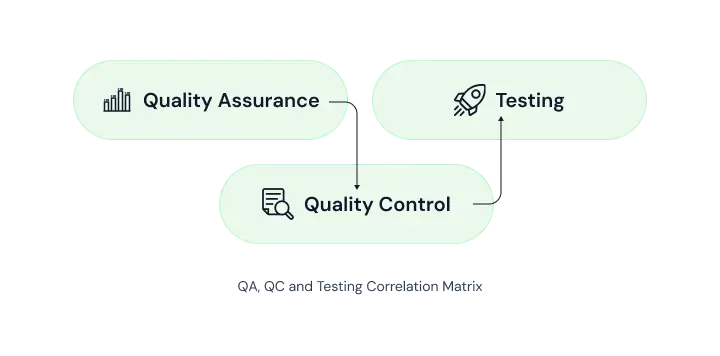Introduction
When creating and planning for release of any custom software development product, it is important to implement the processes of planning, project management, business analysis, as well as quality control (QC) and quality assurance (QA).
Quality control and quality assurance might seem like similar terms, and in some situations might be used interchangeably. Having said that, there are still differences, although in practical use, these activities might show similarities.

Quality assurance
At the beginning of a software development process, QA engineers should prepare and document basic conditions and requirements that pertain to the quality of the end product.
The quality assurance process also implies creation, modification and release of the software product with a minimal possible number of system bugs and defects. Basic components of quality assurance include the following:
- analysis of technical aspects and requirements for the software product.
- evaluation of risks.
- planning of tasks for the process of improvement of quality of the software product.
- creation of document database, testing environment and information.
- verification.
- analysis of the results of testing, and also of additional report documentation.
One of the main advantages of having clearly set quality assurance procedures is the structuredness of the process of all work pertaining to the creation of software development products.
This means that right from the beginning there is a plan and tasks set for each member of the quality validation process. For example, a tester knows at what stage they should start the process of testing, and what specific plan should be followed.
Quality assurance is oriented at the process of software development creation. The basic aim of QA is bug prevention. In order to adhere to the client's requirements, QA specialists might determine standards and methodologies that are to be followed by the whole development team. The QA process includes all members of development and testing teams. QA is carried out before QC.
Testing
- the tester receives the software requirements and a part of the product.
- the tester writes test cases or receives ready test cases.
- the tester checks test cases and documents bugs should there be any.
So, this is testing in the truest sense of the word.
Quality control
A quality control specialist makes sure that the end product conforms to the requirements.
This process includes analysis of the results of testing, and bug fixing. Quality control allows us to analyze the status of the product at a given moment in time, and evaluate the overall progress of software development work.
Some of the main activities of quality control include:
- analysis of readiness of software for release.
- analysis of correlation of the current quality of the project to the original SRS (Software Requirements Specification).
Should the quality control department find a lot of defects, the plan of software development creation might become subject to re-evaluation, and also the found bugs are fixed. Therefore, quality control becomes the concluding step in the process of roll out and testing of any software product.
Speaking about testing, testing cannot provide 100% guarantee of high quality of a web or mobile product (application). The main task of testing is to monitor the creation of software that adheres to available security standards and functional effectiveness. Therefore, the process of testing is focused on software being created and falls within quality control.
Unlike QA which is oriented at the process of software development creation, QC is oriented at the end product. The main aim of QC process is finding and fixing bugs.
The QC process verifies that throughout software creation all known standards are adhered to. The QC process involves all members of the testing team. And QC is carried out exclusively after QA is complete.
Conclusion
To sum up all of the above, testing and quality control are basic components of the whole process of quality assurance.
The processes of quality assurance and quality control work closely together, and even supplement one another. Their main differences lie exclusively in the realization of the following parameters:
- quality assurance is carried out before software is created, and the process has to do with analytics only.
- quality control is developed and is carried out when at least a part of software is ready.
In situ, QC and QA engineers test how each component of software functions on its own, and also how components function together as integral parts of the whole product.
Creation of high quality software products, as well as the process of support of its quality, are fundamental elements in the lifecycle of any software product.
This means that a software development company should follow industry standards to a tee to make sure that functional and non-functional requirements of the ordering client and end user are met.
If you're looking for a trusted partner to drive your next custom software development project forward, contact Syberry and tell us about your business goals.



